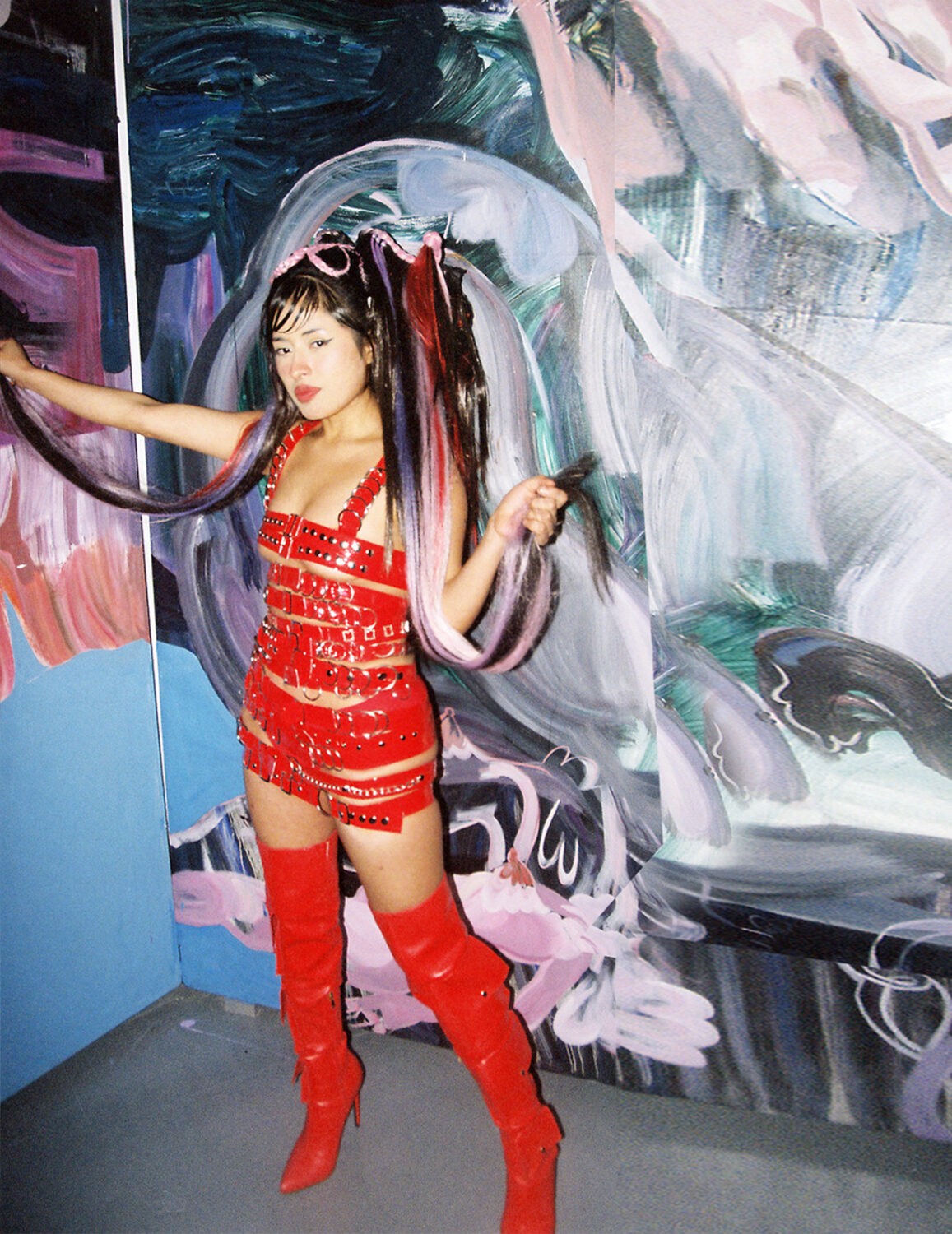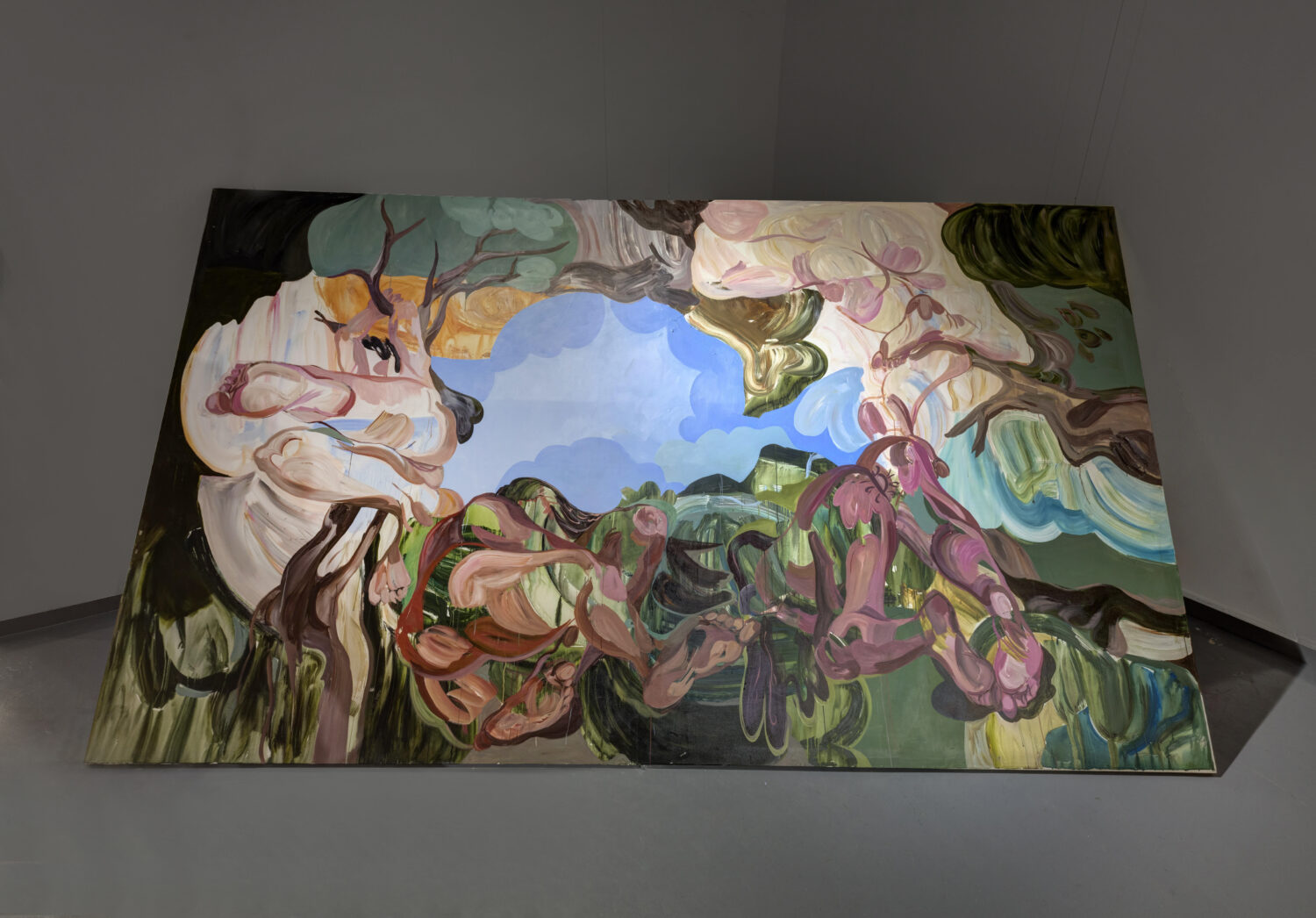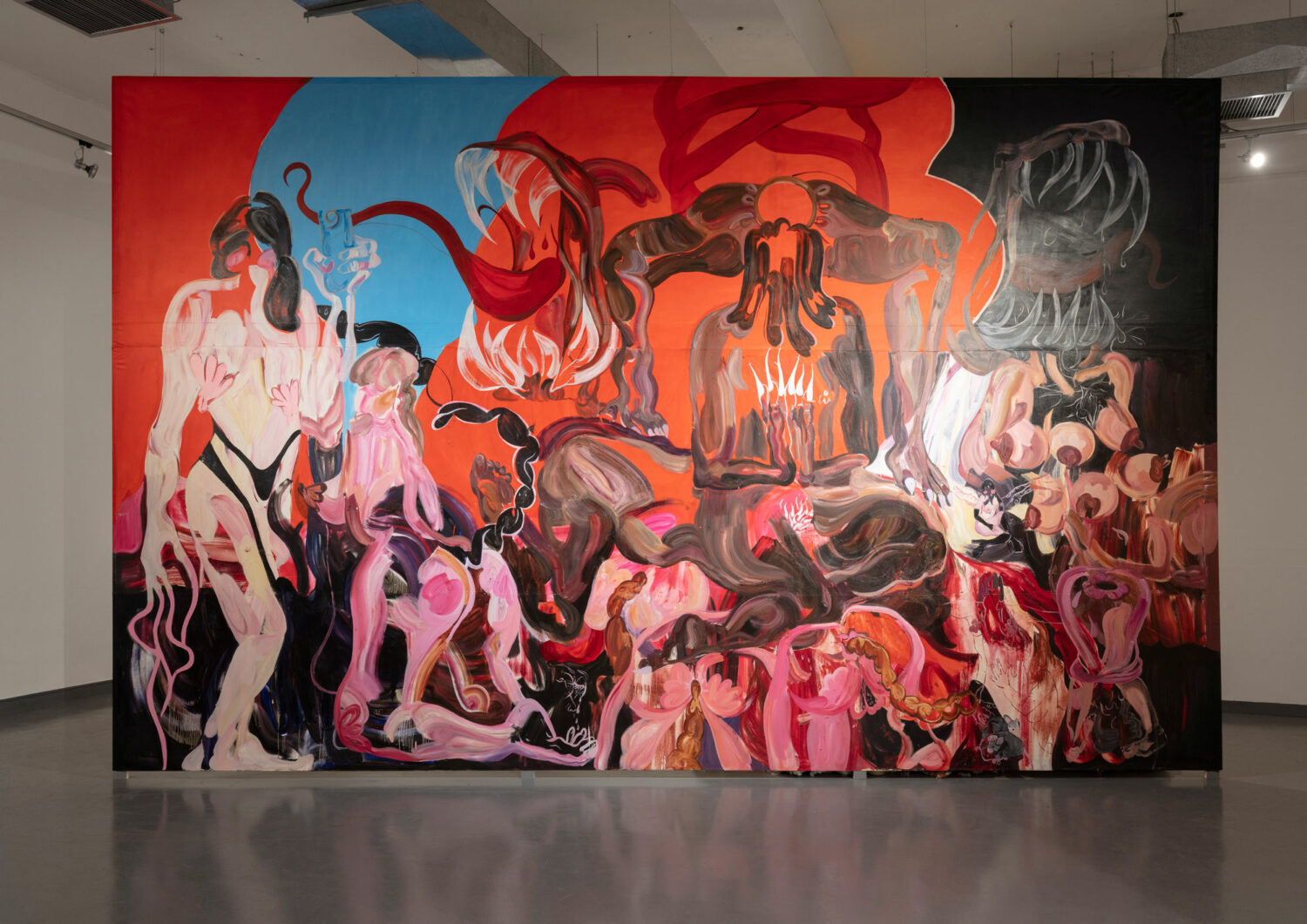Interview: Peruvian Artist Wynnie Mynerva On Disobedience As A Driving Force
By Something CuratedHailing from Villa El Salvador, a coastal district on the fringes of Lima, Peru, artist Wynnie Mynerva grew up in an environment where violence based on gender, sexuality, race, and social class was normalised. Responding to both their traumas and desires, Mynerva creates cathartic visions of revenge and emancipation. Their large-scale, colourful paintings portray bodies that sit on the edge of abstraction, rejecting categorisation, consumption, or control. For their first solo museum exhibition in the US, Mynerva will develop a site-specific installation for the New Museum’s Lobby Gallery. Embracing expansive definitions of gender, they reimagine the Biblical tale of Eve through an enormous painting that stretches across the entire gallery, the largest painting to have been displayed at the New Museum. Accompanying this ambitious work will be a sculptural component crafted from the artist’s own body. To learn more, Something Curated spoke with Mynerva.

Something Curated: Can you give us some insight into your background and journey to art-making?
Wynnie Mynerva: My path is forged from the memory of being a girl of disobedience: dissatisfied, hysterical and incorrigible. Society wanted to tame me and marked my body with fear. With time, disobedience always returns because it is my vital energy and it is in art where I find that fuel that pushes it to ignite again and set everything on fire. Much of my work was developed by reading the signals that my body provides, facing its own limits. In this sense, it is essential for me to always explore our territories and ask: Is it possible to make a revolution here? Not only in art but in my life. That question moves all my projects.
I have learned a lot about human consciousness during each work, but it is still not enough. The art of painting captures my thoughts and through performance/action, I can feel these things and what I feel is a renewing energy. What really matters to me today is how to renew life by offering my body as a space for exploration. Life is a great work of art; it begins with your birth and ends in the moments of your death. The important thing for me is to break into those choreographies because the scripts that we repeat now are unsustainable and painful.

SC: Tell us about the site-specific installation you’re developing for your upcoming presentation at New Museum.
WM: In this exhibition, I reinvent one of the best-known narratives within the Christian imaginary, the myth of “Creation” from the Abrahamic religion. In the history of the Genesis of Christianity, the creation of the woman is related to man, sentencing her existence to be part of Adam, since she was created from his rib. And ever since, this narrative has been used to justify arbitrary gender roles – representing the feminine with servility, guilt and sin. For the Judaic biblical tradition and Mesopotamian folklore, Eve would not be the first version of the feminine. Before her there would have been Lilith who would be created from the same clay as Adam, but after refusing to accept submitting to him to procreate, she would be expelled from paradise. Lilith’s vagina would be turned into eternal fire as a symbol of punishment, prevented from procreating.
The Original Riot represents a genesis of insubordination in the face of masculinity. In this new narrative, Lilith and Eve make a pact of sisterhood and as proof of this alliance Eve removes Adam’s rib. This anti-patriarchal story will be described in 20 meters of painting arranged in the space of the New Museum. In addition, the exhibition presents a sculpture as a relic and fossil, a rib that will be removed from my own body as material proof of the veracity of this story. The Original Riot presents a rejection of the binary lessons of the genre and feeds into new fictions to modify life.

SC: How have you thought about utilising the gallery’s architecture as a site of display?
WM: In the space of the New Museum, you can find two elements: an oil painting and a sculpture/action. Painting for me is beyond a fetishised object of consumption. I refuse to accept that such a personal and heartfelt experience can be hung on a wall and imprisoned to private desire. That is why I dare to build an architectural space with painting. This 20 meter long by four meter high painting will be installed in the shape of a crescent. This work is inaccessible to any room or house; painting for me is an experience just as fleeting as my own performances/actions. The spatial work creates an access where we will find a sculpture made of golden metal that supports my floating rib through a thin rod. I do this interview a few days before the surgery to remove my number 11 rib. I think about how I have dealt with pain in my different jobs, and I offer pain in this room as a third element that becomes a ritual and instrument.
SC: Your work is of course very personal — can you tell us more about what influences the compelling figures you depict?
WM: The figures for me are humanity, a wave of meat, representations that we have been absorbed by since the beginnings of art and the history of humanity. They are female characters; they are not women. They are female characters because masculinity overwhelms me and at times terrifies me. They are desirous and desired beings, overwhelmed and unseemly.
SC: And what are you currently reading?
WM: The Companion Species Manifesto: Dogs, People, and Significant Otherness by Donna Haraway.
Wynnie Mynerva: The Original Riot at the New Museum’s Lobby Gallery runs from 29 June – 17 September 2023.
Feature image: Wynnie Mynerva, Altar: La posibilidad de los deseos hecho carne, 2022. Exhibition view: “Paradiso,” Proyecto AMIL, Lima, Peru. Photo: Edi Hirose. Courtesy Ginberg Galería, Lima, Peru